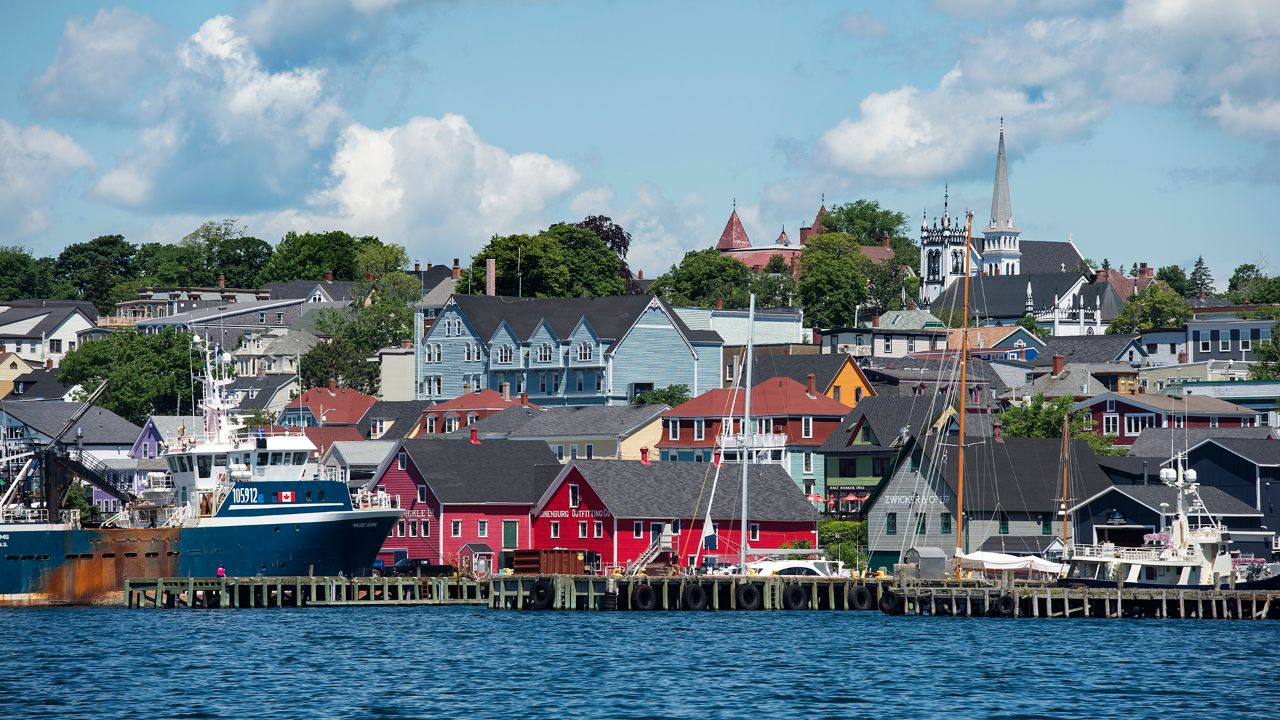Lunenburg’s Architecture and Maritime History Draw Visitors

Story by Karen Pinchin; photos by Darren Calabrese
Karen lives in Canada's Maritime Provinces. Darren is an award-winning photographer.
Tall sailing ships, good food and historical walks are among the highlights of a visit to this charming Nova Scotia town.
From the Atlantic Ocean, Lunenburg, Nova Scotia, looks like a postcard — colourful hillside houses and leafy trees are arranged in an orderly grid pattern.
But if you look closely, there’s a revealing clue to this town’s connection with its maritime past. Many of those houses have a top-floor “widow’s walk,” a glass-lined perch where families anxiously awaited their loved ones’ return from sea.
Lunenburg is far older than Canada. These waters delivered the town’s first Protestant settlers more than a hundred years before the country declared independence from the British. Promised arable land, settlers found nothing but coastal rock. So they improvised and turned to the sea, where fisheries and shipbuilding led to spectacular prosperity. Even after the fishing industry collapsed in the 1990s, tourists flocked to this pretty town, drawn by the famous tall ship Bluenose. The fishing schooner-turned-racing boat never lost a race.
Named after her predecessor, Bluenose II now docks in Lunenburg’s harbour. It’s 151 feet long, painted black with gold trim and boasts a 125-foot mast. Captain Phil Watson has sailed on this ship for 30 years, starting as a deckhand in 1987.
Growing up in nearby Mahone Bay, Watson was always drawn to the ocean. "I remember being in the old barber chair, with the board across the arms, talking about rum-running and fishing,” he says. "Men could be gone for months. If a big storm came through, the town wouldn't know — until the schooner came into the harbour with the flag at half-mast — if everyone was or wasn't coming back."
A red, Gothic-like building sits at the top of the town. Formerly a school and now home to small businesses and an international music academy, the “Castle on the Hill” is rumoured to be haunted. And it’s here where my walking tour with Lunenburg-born Ashlee Feener starts. Feener connects paranormal rumours to the town’s aquatic past. “Sailors by nature were incredibly superstitious people," Feener says. "If you wanted to fish out of Lunenburg, you could never wear grey mittens, out of the fear they'd bring grey skies.”
In 1995, UNESCO designated Old Town Lunenburg a World Heritage Site for its British-style street planning and unique architecture. But it feels surprisingly modern for such an old place. Lunenburg’s annual Folk Harbour Festival — the longest running music festival in Nova Scotia — draws thousands of people every summer, and like tour guide Feener, a new generation of artists, craftspeople, entrepreneurs and cooks are building a future here.
After the tour, I grab an excellent iced coffee at Laughing Whale Coffee Roasters — I’m told it’s the “best coffee in the Maritimes” — and head toward lunch at the Grand Banker Bar &Grill. This upscale pub features the appropriately named Lunenburger, a hamburger topped with a heaping pile of lobster meat, including two claws and a bun garnished with a bacon-wrapped scallop.
Then, it’s off to the Fisheries Museum of the Atlantic, housed in a complex of red buildings along the harbour. Paula Masson is the museum guide. Masson's family originally settled here in 1753; generations later, her father took a job in the fish plant as a young man. In one well-lit corner, a retired shipbuilder shows a detailed model ship, which can take two years to build. The finished ships are staggeringly lifelike, with sculpted characters, handmade ropes and tiny fish.
Masson says the museum serves to demonstrate a past era of the fisheries, back when it was a more dangerous job. “Fishermen and families do know there's a risk,” she says. To emphasize the point, she leads us into the museum’s stain-glassed chapel where the names of hundreds of local people lost at sea have been hand-painted on the wall. “Nobody knows what it's like when your husband or boyfriend is out there, and the wind is blowing,” she said.
For Captain Watson of the Bluenose II, his favourite Atlantic survival story is of stranded American fisherman Howard Blackburn. In 1883, his hands froze to the oars while he rowed back to shore, a journey that took five days.
Watson believes bringing a taste of that history to locals and tourists is one of the best parts of his job. “We can say your grandfather, your great-grandfather, this is what they did,” he says. “We bring it to life.”
The Phenomenal Bay of Fundy
New Brunswick’s coastal communities live with the pulse of the ocean, which provides an unforgettable experience.
Delightful St. Andrews offers simple pleasures
New Brunswick’s resort town is a great getaway for a family vacation or romantic weekend.






